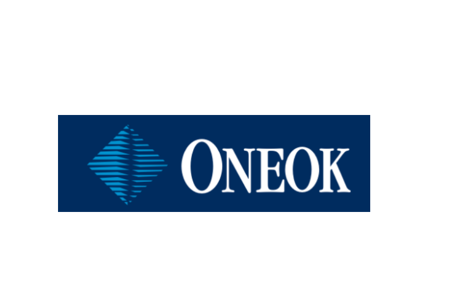The Midland Basin is entering another build-out phase—and ONEOK is quietly laying the infrastructure that will anchor the next wave of oil, gas, and NGL development. A newly permitted 38.32-mile hazardous liquid pipeline loop, officially known as the Midland Loop (System ID 691127), signals a major expansion across Andrews, Ector, Martin, and Midland counties.
The Railroad Commission of Texas approved the permit on November 21, 2025, authorizing ONEOK NGL Pipeline, L.L.C. to operate the loop as a common-carrier NGL line—critical for serving a basin where NGL volumes are expected to surge.
But infrastructure doesn’t move alone. ONEOK is simultaneously advancing new air permits for compressor stations, processing expansions, and associated equipment, all designed to support rising natural gas and NGL throughput across the Midland Basin.
And their latest earnings call makes one thing clear: the Midland Basin is once again a high-priority growth engine for ONEOK.
What the “Loop” Really Means — Increasing Reliability, Redundancy & Capacity
On page 3 of the permit documents, the system is explicitly referred to as the “MIDLAND LOOP/20643”, confirming the project’s purpose: to construct a duplicate or parallel NGL transport line to increase system reliability and expand takeaway.
Loops are a hallmark of mature midstream systems—built not because a company is testing demand, but because existing lines are already running full.
This 38-mile loop touches the heart of the Midland fairway, where surging gas-to-oil ratios (GORs) and robust drilling programs continue to push NGL volumes upward.
Air Permits Show Parallel Build-Out: Compression, Processing & Emissions-Handling Capacity
Your ONEOK New Air Permits file shows a cluster of new compressor, dehydration, and tank battery permits across the Midland region. These air permits matter because:
- New compression = more gas and NGL throughput
- Additional processing equipment = higher volumes of residue gas & Y-grade
- Tank, control, and emissions upgrades = systems preparing for higher utilization
The timing of these permits aligns directly with the pipeline loop construction start date (October 2025) noted in the permit’s New Construction Report.
Together, the pipeline expansion and air permit activity signal that ONEOK sees multi-year volume growth ahead—not just from its own dedications, but basin-wide.
What ONEOK Said About the Midland Basin — Straight From the Earnings Call
Your call transcript summaries match the physical build-out taking place. ONEOK highlighted five key themes that reinforce why the Midland Loop is being constructed now.
1. Gas Processing Expansions Target Both Midland & Delaware — Over 550 MMcf/d
ONEOK emphasized strong producer activity across its dedicated Permian acreage:
“We have 20 active rigs on our dedicated acreage, driving the need for recently announced capacity expansions, totaling more than 550 MMcf/d across the Midland and Delaware Basins.”
This is the clearest signal:
They need more pipeline capacity to move rising NGL volumes out of Midland.
2. Midland Crude Gathering Remains Resilient
Despite variability in short-haul flows, the core Midland gathering business is strong:
“Our crude oil gathering and long-haul pipelines continue to perform well… demonstrating resiliency of our Midland gathering business.”
This resiliency supports continued infrastructure investment—including new liquids loops.
3. Softness Only in Lower-Margin Short-Haul Movements
ONEOK clarified the slight downturn in Midland crude mostly affected:
“…short-haul volume out in the Midland… But the core business is where we expect it to be.”
This means the long-haul and NGL systems—which the loop reinforces—remain steady or growing.
4. Scale in the Permian (Including Midland) Is a Strategic Priority
During the Q&A:
“The Permian Basin continues to be a key area of strategic growth for us… We like scale in the Permian because we’re growing in the Permian.”
The Midland Loop is a textbook “scaling” project—small footprint, massive system impact.
5. Additional Midland NGL Volumes Coming from EnLink Plants
This is the sleeper catalyst:
“…legacy EnLink plants… roughly 50,000 barrels/day will start coming over from ’26 to ’28…”
That is exactly the type of incremental volume that requires looping and air permit upgrades to handle.
Why This Matters for the Midland Basin
With the Midland Loop in place, ONEOK is effectively:
1. Unlocking More NGL Takeaway
A loop increases the flow rate and reduces bottlenecks during peak production hours.
2. Allowing Higher-GOR Development
Producers are drilling deeper, hotter, gassier zones in Martin & Midland Counties—this adds NGL load.
3. Preparing for EnLink NGL Migration
That 50,000 b/d shift is not hypothetical—it’s contractually determined by expiration dates.
4. Adding Redundancy to a Highly Congested Corridor
Midland-to-Ector-to-Andrews is one of the busiest midstream corridors in Texas.
5. Supporting New Gas Plants & Compression
Air permit filings show the upstream and midstream infrastructure is being built in lockstep.
The Bottom Line: ONEOK Is Quietly Fortifying Its Midland Basin Position
The combination of:
- A new 38-mile pipeline loop across four high-activity counties
- A wave of new air permits for supporting midstream assets
- Public statements prioritizing Permian scale, NGL growth, and dedicated rig activity
…shows that ONEOK is not simply maintaining its Midland Basin footprint—
it is expanding it to meet the next phase of Permian growth.
This loop is not a minor project.
It’s a strategic backbone, preparing ONEOK’s system for:
- More rigs
- More gas
- Higher NGL yields
- EnLink’s incoming NGL volumes
- Stronger long-haul pipeline economics
The Midland Basin is moving into another growth cycle—and ONEOK is building the infrastructure to catch every molecule of it.


